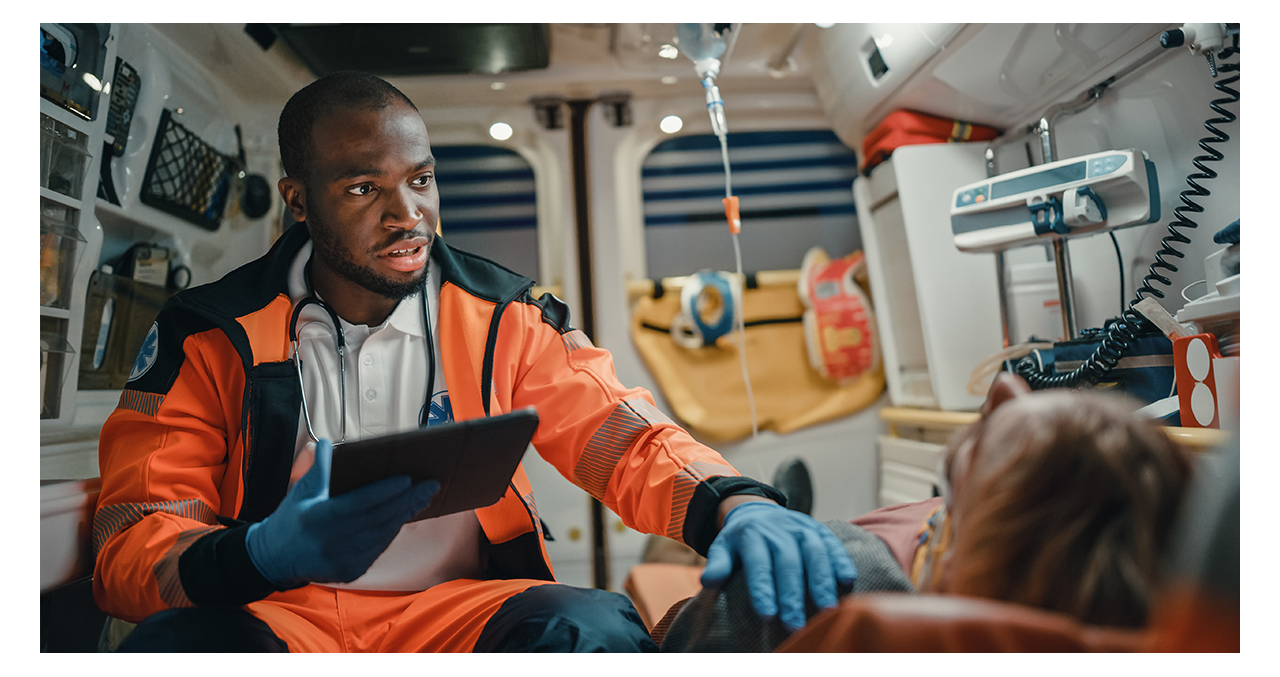
Due to its significant increase over the last several years, gun violence is now being recognized as a public health crisis by many healthcare organizations and medical professionals. Additionally, social determinants of health and the cycle of gun violence are inextricably linked, with many of the communities experiencing higher rates of firearm-related injury and death also being disproportionately impacted by other health issues.
During a recent ACHE webinar, healthcare leaders Brenda Battle, RN, senior vice president, community health transformation/chief DEI officer, UChicago Medicine; and Chethan Sathya, MD, FRCSC, pediatric general and thoracic surgeon/director, Northwell Health Gun Violence Prevention Center; discussed the challenges around preventing firearm injury and death. They also offered guidance for how healthcare executives can advance strategies that interrupt the cycle of gun violence.
Here are three insights shared by Battle and Sathya for healthcare leaders to consider when assessing and addressing the issue of gun violence in their own communities.
1. The impact of gun violence on the healthcare system should not be underestimated.
The effects of gun violence are widespread and enduring, according to Battle. “We see the direct impact of gun violence on our patients and their families, but we also see impact it has on our staff and our clinicians,” says Battle. “The psychological impact of violence on these individuals is lasting.”
In addition to affecting the mental health and well-being of patients, families and healthcare workers, gun violence places a considerable financial toll on hospitals and health systems. In fact, while there is no complete information on the healthcare costs of firearm injuries, a report released by the U.S. Government Accountability Office in July 2021 found hospital costs for initial gun injury care were just over $1 billion a year in 2016 and 2017 (the latest data available), and costs associated with physicians' fees could add 20% to that total.
Beyond the mental, emotional and financial impact gun violence has on the healthcare system, Sathya argues that hospitals and healthcare leaders have a responsibility to address gun violence from a public health standpoint. “As healthcare leaders, we care if people in our community die from COVID-19, or if they die (or are injured) in motor vehicle collisions, or if they die from cancer as a result of smoking. So how can we not care that they are dying, or are nonfatally injured, from firearms? If we are in the business of health, caring about gun violence is a no-brainer.”
2. Education and collaboration are great starting points for tacking this issue.
According to Sathya, gun violence receives less research funding than virtually any other leading cause of death in the U.S., which means healthcare leaders entering the space of gun violence prevention don’t really know what works and what doesn’t work yet. But just because gun violence is a relatively new public health issue for hospitals and health systems to tackle doesn’t mean there isn’t a wealth of resources to tap to get started.
Sathya suggested joining coalitions that are focused on gun violence, violence prevention and community engagement to begin to understand what the issue is, what work has already been done in the community, what data is available on the subject and what misinformation around the issue needs to be clarified. “There are a lot of misconceptions around gun violence as a public health issue … This is not a Second Amendment issue, this is about injury prevention and harm reduction,” said Sathya.
In addition to learning about what work is already happening, Battle said joining coalitions and collaborating with community organizations is an important part of building an understanding for how gun violence impacts the healthcare system. “Even if your hospital is not located in the community that’s caring for persons impacted by violence, the ecosystem—including the reimbursement system, the social services system and the public health system—is impacted by the issues of violence,” said Battle. Another benefit of collaborating with other healthcare organizations and grassroots, community stakeholders is the opportunity to align financial, human and other resources.
3. Engaging community members at every step of the process is essential.
Working with community members is important because, in Sathya’s words, “… we all serve different communities and knowing what the people in that community want and what their concerns are around safety and violence is critical to assess where your organizational priorities should be.” Ultimately, it’s the community’s input that should inform the efforts and initiatives hospitals and health systems develop around gun violence prevention.
“We didn’t start our violence recovery program on our own, we convened a community and University of Chicago Medicine faculty and staff summit where we learned not only from national players in the space, but also directly from community members themselves,” said Battle. She added that local residents were able to point UChicago Medicine in the direction of trusted community members who were already working on gun and violence prevention, which allowed healthcare leaders to start building relationships within the community.
As part of UChicago Medicine’s model, the case management component starts in the hospital but extends out into the community. Violence interventionists and violence recovery specialists meet patients where they live and work. “The key to this effort is to stay alongside patients through the recovery phase,” said Battle. “Having a partner, friend or someone with a similar lived experience to help motivate individuals to seek out, follow-through on and receive the support services they need to recover is crucial for success.”
Learn More
Gun violence and violence prevention are complex issues. There is so much still to learn and so much work still to do to improve community health and safety. To learn more about the work UChicago Medicine and Northwell Health are doing, and for more takeaways from Battle and Sathya, download the free recording of the webinar, “The Role of Hospitals and Health Systems in Gun Violence Prevention,” today.
